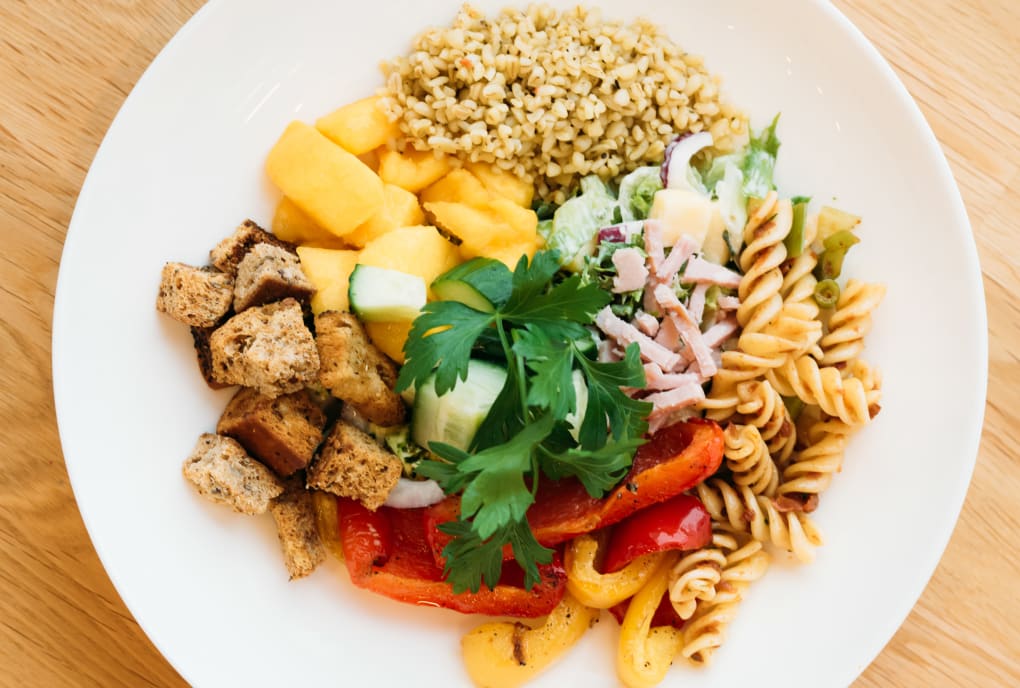
Hooray! Fewer and fewer people are choosing paper plates at the canteen. Together we're saving the world 👏.
Use of disposables is decreasing
As an important part of our work towards a circular economy, all our restaurants have cut the use of disposable crockery, cups and cutlery over the past year.
In practice, this means that the range of disposable crockery has been completely or partially removed from our restaurants. The aim is for as many people as possible to use reusable crockery - i.e. cups, plates and cutlery that are washed and not thrown in the rubbish.
We were very successful with our 2023 target, which was to reduce the use of cardboard to 50 per cent. This year's goal is for 60% of our crockery to be reusable. We are very close with 58% as of 30 June 2024, so now we need YOUR help to help save the world! 🌳
🍽️ SO: PLEASE CHOOSE REUSABLE IN THE CANTEEN!
...but I need to bring the food with me...
No stress!
If you need to take your food to a group room, lecture theatre or elsewhere on campus, you can still bring a glass plate or porcelain cup and proper cutlery from the canteen. But don't forget to bring back the dishes in the restaurant when you're done!
Are you taking your coffee with you in the car, however? If so, we hope you have a thermos cup with you, because you can use it when you fill your coffee in the canteen ♻️
Why?
Cardboard and paper are in many ways better than plastic, but they are still resources we obtain from nature, that are not inexhaustible. Cutting down trees to produce products we only use once - is not sustainable.
At SSN, we focus on reducing the burden on the climate and nature, and we are therefore actively working for a transition from a consumption based on use and throwing away - to a circular economy where we take better care of our resources. We commit to this in our strategy.
Less "use and throw away" reduces greenhouse gas emissions, slows down the loss of natural diversity and reduces pollution and littering of the environment.
Transition from "use and throw away" is a necessary part of the transition to a low-emission society and to achieve the UN's sustainability goals.
What is circular economy?
In a circular economy, we use natural resources and products efficiently and for as long as possible, in a cycle where the least possible resources are lost.
Read more about circular economy on UNCTAD.
The reuse options have best results
Porcelain, ceramics and glass require a lot of energy when they are produced, but the multi-use options can and should have a very long life. If you assume a life cycle with normal use, the reuse options will come out best. However, there are many factors that influence how well, for example:
How many times the multi-use variant is used before it is discarded.
What kind of material it is made of and where it is produced.
Which energy source is used to wash it.

Our plates are made of glass, which is easier to recycle than, for example, porcelain. It is NOT more expensive to buy food by weight on a glass plate than on a cardboard plate, the weight of the plate is deducted at checkout.
Sources:
Environmental assessment of beer serving at festivals. 2021. Kari-Anne Lyng/Irmelin de Sadeleer, Norsus (Norwegian Institute for Sustainability Research).
Reusable vs disposable cups revisited. April 2014 - The International Journal of Life Cycle Assessment. Laura A. Mergula/Bhavik R. Bakshi, The Ohio State University.

